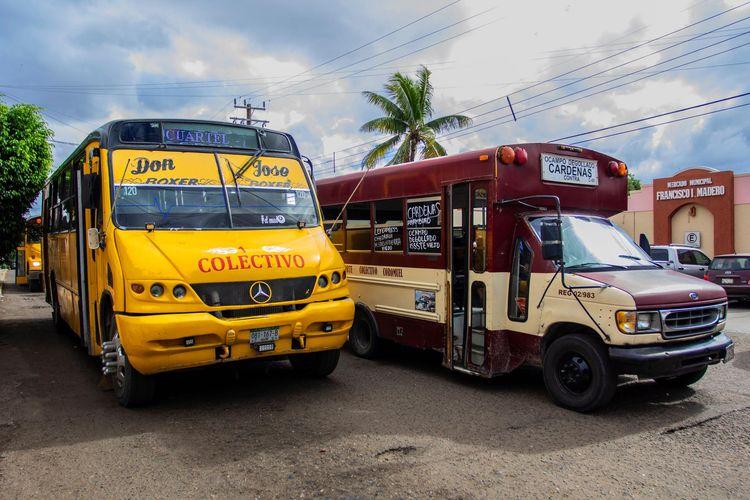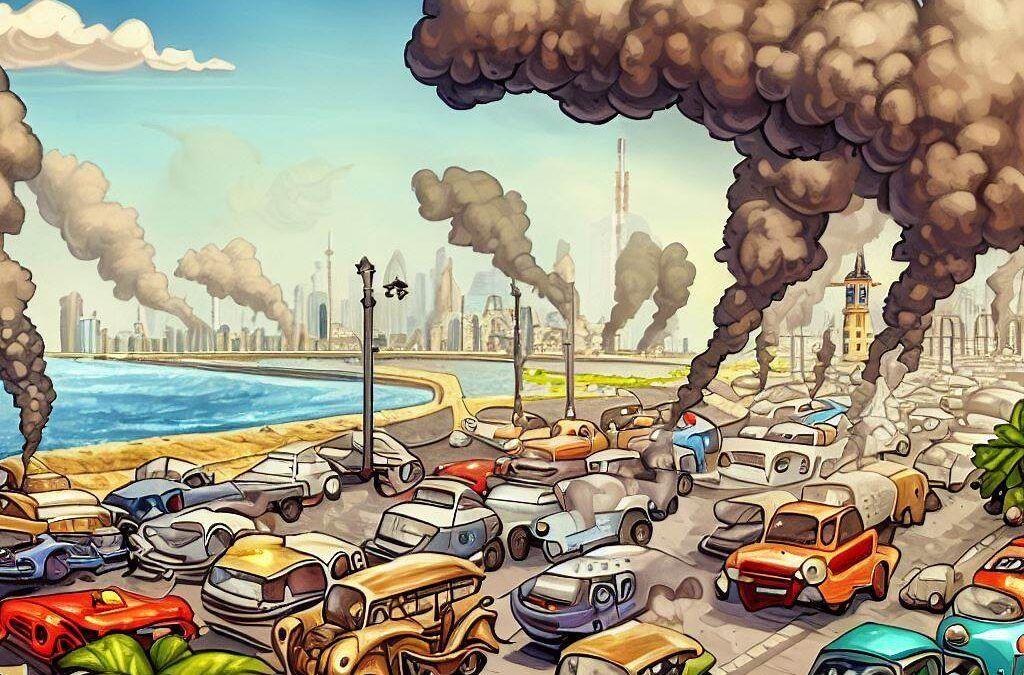In October 2023, a federal judge resolved an amparo lawsuit from the Mexican Center for Environmental Law (Cemda) ordering the City Council of La Paz, Baja California Sur, to generate a program to measure and reduce air pollution levels.
Carlos Mancilla, director of BCSicletos, an organization dedicated to urban mobility, sustainable cities and the defense of urban territory, believes that this policy should focus on generating a mobility system, which is not focused on cars, but allows us to decide how to move around the city in a comfortable, efficient, safe and fast way.
Vehicle Verification Policy Effects
Mario Sánchez, Northwest regional director of the Mexican Center for Environmental Law (Cemda), said at a press conference, where the resolution of the amparo was presented, that the municipal authority has the obligation to design a public policy that aims to “measure air quality and then seek appropriate solutions to improve air quality, including vehicle verification.” However, he clarified that this purpose is not limited to checks alone.
“It is the design of a whole program and policy that involves different actors and that collaborates with other authorities, and that in the end certainty is achieved about what is being breathed, that those who are issuing it are verified and that policies, programs, guidelines are implemented to reduce this level of pollution,” Sánchez explained.
Cristina González Rubio, director of Climate Change at the Secretariat of Urban Planning, Infrastructure, Mobility, Environment and Natural Resources (Sepuimm), said that the state is responsible for carrying out vehicle verification and that next year they will present the design of the program to implement checks.
He added that since this protection they were already working on various actions, such as the drafting of the Climate Change Act, which is under discussion in the Congress of Baja California Sur, and the reinstallation of the Core Committee of Pro-Aire with the intention of reducing air pollution.
La Paz is a city with high levels of motorization, Mancilla points out, since there are 8 cars per 10 people, according to data from Inegi for motor vehicles (2022) and the census of the population over 15 years old (2020).
Consequently, 51% of air pollution comes from mobile sources over fixed sources (43%) according to the Energy and Air Quality Diagnosis of the Center for Renewable Energy and Environmental Quality (CERCA).
Faced with this scenario, for Mancilla, it is essential that public policy create mobility alternatives before discouraging the use of cars through vehicle verification.
“It's focusing again on cars, instead of reflecting on how we just make fewer cars move. There are many elements that the State should have resolved sooner by then, yes, to be able to make a policy in which you seek to discourage the use of cars. The verification policy should take place when the State already has the conditions so that you can change a way of moving,” said Mancilla.
Because failure to do so discriminates against vulnerable sectors of the population who cannot purchase a new car that meets environmental conditions and who do not have other mobility alternatives.
“You can't be criminalizing your most vulnerable populations if you don't give them the conditions for how you're going to travel, because we have a truly inefficient public transport system, we don't have non-motorized mobility networks, we don't have connected bike paths,” Mancilla said.
Environmental quality monitoring
It is also the only entity that lacks direct actions to measure, mitigate and combat air pollution by competent authorities in accordance with the Management Program for Improving Air Quality of the state of Baja California Sur (Pro-Aire BCS, 2018), a government instrument that establishes strategies to reduce atmospheric emissions.
Currently, the state government has a regulatory booth for monitoring air quality used by Semarnat and the National Institute for Climate Change, but which does not yet have a monitoring campaign, Cristina González acknowledged.
Mario Sánchez de Cemda insisted that it is important that official monitoring be carried out since “we cannot improve what we do not know” and that in addition this information must be made public and “it will help to make better decisions regarding the needs that exist in the matter”.
However, for organizations like BCSicletos, official measurement is not as important as implementing policies to reduce pollution.
“What worries us least at BCSicletos is that the authority measures it, because other people are already measuring it,” referring to the organization's air quality monitoring program, which focuses on mobile sources and the monitoring of fixed sources carried out by CERCA.
“The problem with vehicle saturation is obvious. We didn't even see how important it is that this topic of discussions be focused on vehicle verification and the topic of monitoring because that is not really generating clear direct solutions. We are going to have just the authorities measuring the air saying what we have been saying for many years and why else is there a structure of a real public policy that seeks to modify this,” he said.
With data from the monitoring of mobile sources coming mostly from car exhausts, it was identified that in 2022 there were 300 days with poor air quality and that 75% of the pollutants regulated by national or international standards exceed the permitted concentrations, according to the BCSicletos report.
“In other words, we have poor air quality compared to large cities, so we have air quality that is very similar to Mexicali, Tijuana, Mexico City, from that perspective,” Mancilla said.
Inefficient public system and its insufficient modernization

Public transport in the city of La Paz. Source: La Paz City Council.
The high levels of air pollution and motorization have been promoted by the State, according to Mancilla, mainly because it encourages the use of vehicles through car infrastructure and because of public transport conditions that do not meet the mobility needs of the population.
An example of this is that of the 302 collective, urban and suburban concessions that the public system of La Paz has, 152 are active; of the 74 approved public transport routes, 32 provide the service constantly; 70% of the system has an overlap, meaning that the routes run on the same streets and have the same destinations and are connected; and only four are accessible to people with disabilities, according to a request for information.
Also, the regulations for public cargo and passenger transport in the municipality of La Paz state that the units that provide the public transport service will have 10 years of useful life. However, of the 152 active ones, no more than 20, or 13%, meet this requirement.
Faced with this, Mancilla asks: “What alternatives do you give people? You're going to fine them for not complying with environmental conditions and standards, but what alternatives do you give them? , this? , go to this system?” , with the characteristics set out above.
In this regard, the director of Climate Change pointed out that in La Paz, progress is being made in new units and a reengineering of public transport routes and that the installation or recovery of bike paths, such as the Forjadores and Austín Olachea boulevars, has been sought.
BCSicletos considered that these efforts have been insufficient to strengthen and guarantee an efficient, affordable and clean public transport system as described in the study carried out by the City of La Paz, to be an alternative for mobility and to reduce polluting emissions.



Comentarios (0)